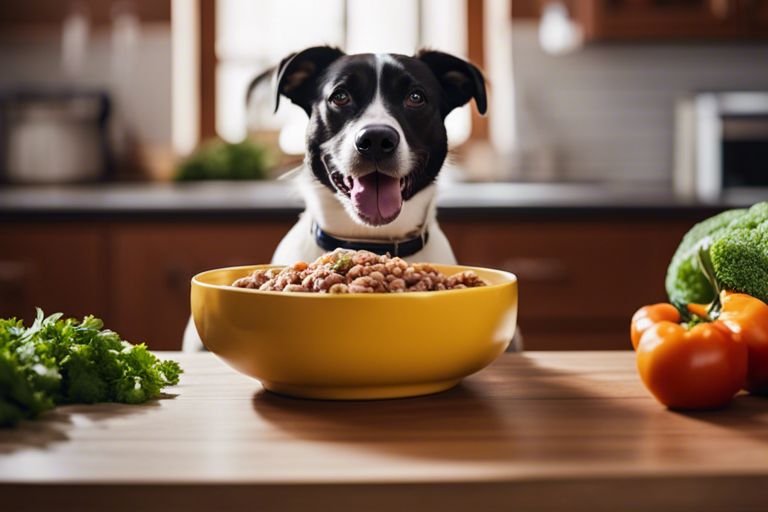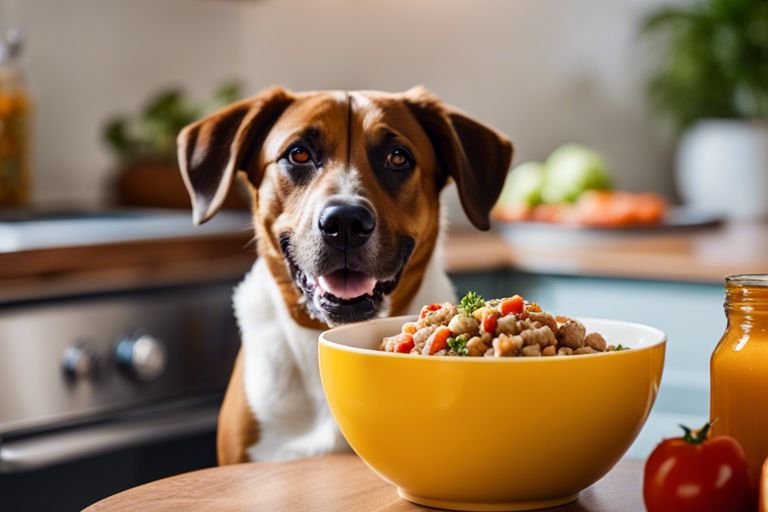Allergy Friendly Dog Food: Simple Steps to Homemade Preparation

Many pet owners may find themselves in search of the right diet for their furry friends, especially if their dogs have allergies. Making homemade allergy friendly dog food is a great way to ensure your dog gets the nutrition they need without the risk of triggering any allergies. In this blog post, we will outline some simple steps to help you create delicious and safe meals for your beloved pup.
Key Takeaways:
- Variety of Ingredients: Utilize a variety of allergy friendly dog food ingredients such as lean proteins, vegetables, and grains to ensure a balanced and nutritious diet for your dog.
- Avoid Common Allergens: Steer clear of common allergens like wheat, soy, and dairy products when making homemade dog food to minimize the risk of allergic reactions.
- Consult a Veterinarian: Before making any changes to your dog’s diet, consult with a veterinarian to ensure that the homemade allergy friendly dog food meets your dog’s specific nutritional needs.
- Monitor for Allergic Reactions: Keep a close eye on your dog for any signs of allergic reactions, such as itching, hives, or digestive issues, when introducing new homemade dog food recipes.
- Gradual Transition: Transition your dog to the new homemade allergy friendly dog food gradually by mixing it with their current food to avoid digestive upsets or food aversion.

Understanding Dog Allergies
Common Symptoms of Food Allergies in Dogs
An necessary step in management.your dog’s health is understanding food allergies. Common symptoms of food allergies in dogs include itching, skin redness, hair loss, vomiting, diarrhea, and ear infections. If you notice any of these signs, consult your veterinarian to determine the best course of action.
Identifying Allergens
Allergens in dog food can vary widely and identifying them can be a challenging task. Common allergens include proteins such as beef, chicken, dairy, and grains like wheat and corn. It is necessary to carefully read food labels and consider conducting an elimination diet under the guidance of a veterinarian to pinpoint the specific allergen triggering your dog’s symptoms.
Benefits of Homemade Dog Food
Control Over Ingredients
Little is as reassuring as knowing exactly what goes into your furry friend’s food. With homemade dog food, you have full control over the quality and source of ingredients, ensuring that your pup’s meals are free from potential allergens and fillers.
Nutritional Advantages
The nutritional advantages of homemade dog food are unparalleled. Food prepared at home can be tailored to meet your dog’s specific dietary needs, whether they require a higher protein content, need to avoid certain ingredients, or have unique nutritional requirements. It also allows you to incorporate fresh and whole ingredients, ensuring your dog gets the best quality nutrients.

Crafting Your Allergy Friendly Dog Food Recipe
Selecting Safe Ingredients
Keep your furry friend safe by selecting high-quality ingredients for their homemade allergy friendly dog food. Look for protein sources like lean meats such as chicken or turkey, and carbohydrates like sweet potatoes or rice. Avoid common allergens such as wheat, soy, and dairy to cater to sensitive tummies.
Balancing Nutrients
With a careful selection of ingredients, you can ensure that your dog’s homemade food is nutritionally balanced. Ingredients such as vegetables, fruits, and supplements like fish oil can provide necessary vitamins and minerals. Consult with your veterinarian to create a recipe that meets your pet’s unique dietary needs.
The key to balancing nutrients in homemade allergy friendly dog food lies in variety. Including a mix of protein, carbohydrates, healthy fats, and vitamins will help your dog thrive. Make sure to research portion sizes and recommended ratios to maintain a well-rounded diet for your furry companion.

Preparation and Storage
Despite the convenience of store-bought dog food, making homemade allergy friendly dog food can be a rewarding experience. For some easy and delicious recipes, check out the 4 Best Allergy-Friendly Homemade Dog Food Recipes recommended by experts.
Cooking Techniques
Any homemade dog food recipe will require basic cooking techniques such as boiling, steaming, or sautéing. Be sure to follow the recipe instructions carefully to ensure that all ingredients are cooked thoroughly and safely for your furry friend.
Storing for Freshness
One key to maintaining the freshness of homemade dog food is proper storage. Store leftovers in airtight containers in the refrigerator for up to three days. For longer storage, you can freeze portions in freezer-safe bags or containers for up to three months.
Plus, always remember to thaw frozen portions in the refrigerator before serving to your dog. This will help retain the nutrients and flavors of the homemade meal.
Related Article: The Benefits Of Grain-Free Puppy Food For Your Growing Pup
Summing up
Upon reflecting on the simple steps to making homemade allergy friendly dog food, it is clear that with the right ingredients and knowledge, anyone can provide a healthy and safe diet for their furry friend. By following these guidelines, you can ensure that your dog’s nutritional needs are met while also catering to any specific allergies or sensitivities they may have. Homemade dog food can be a great alternative to store-bought options, allowing you to have control over what goes into your pet’s bowl.
FAQ
Q: Why should I consider making homemade allergy friendly dog food?
A: Making homemade allergy friendly dog food allows you to control the ingredients, ensuring that your dog’s specific dietary needs are met while avoiding potential allergens found in commercial dog food.
Q: How can I identify if my dog has food allergies?
A: Common signs of food allergies in dogs include itchiness, gastrointestinal issues, chronic ear infections, and skin problems. Consult with your veterinarian for proper diagnosis and guidance.
Q: What are some common allergy-friendly ingredients for homemade dog food?
A: Allergy-friendly ingredients for homemade dog food include lean meats like turkey or rabbit, carbohydrates such as sweet potatoes or brown rice, and vegetables like carrots or green beans. Always avoid common allergens like wheat, soy, and dairy.
Q: How do I ensure my homemade dog food is nutritionally balanced?
A: Consult with a veterinarian or canine nutritionist to create a balanced recipe for your dog’s specific needs. Include a variety of ingredients to provide crucial nutrients like protein, carbohydrates, fats, vitamins, and minerals.
Q: Can I gradually transition my dog to a homemade allergy-friendly diet?
A: Yes, it is recommended to slowly transition your dog to a new diet over a period of 7-10 days to avoid digestive upset. Start by mixing small amounts of homemade food with your dog’s current food, gradually increasing the proportion of homemade food each day.




